Contents
Login with Office 365 Single Sign-On (SSO) using WordPress OAuth | WordPress Office 365 SSO
Office 365 Single Sign-On (SSO) integration on your WordPress website with WordPress OAuth & OpenID Connect Single Sign-On (SSO) plugin easily enables your users to conveniently log into your websites and applications with Single Sign-On (SSO) using a single set of credentials from their Office 365 account.
With Office 365 as the OAuth Provider and WordPress as the OAuth Client, our plugin ensures a seamless SSO experience between the WordPress and Office 365 platforms with just a single click.
In addition to Office 365 Single Sign-On (SSO), our WordPress SSO plugin offers advanced features for Office 365 integration. This includes User profile attribute mapping, Role mapping, and granting site access based on organization email domains. For added security, you can even protect your entire WordPress site behind the WordPress Office 365 Single Sign-On (SSO).
By implementing Office 365 SSO, our plugin enhances user authentication and safeguards the login process. To get started, simply follow the step-by-step instructions in the guide below to install and configure the plugin for your Office 365 Office 365 Single Sign-On (SSO) setup.
Prerequisites: Download and Installation
- Log into your WordPress instance as an admin.
- Go to the WordPress Dashboard -> Plugins and click on Add New.
- Search for a WordPress OAuth Single Sign-On (SSO) plugin and click on Install Now.
- Once installed click on Activate.
Steps to Login into WordPress with Office 365 Single Sign-On (SSO)
1. Setup Office 365 as OAuth Provider
- Sign in to Microsoft Entra ID (Azure AD) portal.
- Select Microsoft Entra ID (Azure AD).
- In the left-hand navigation panel, click the App registrations service, and click New registration.
- Configure the following options to create a new application.
- Enter a name for your application under the Name text field.
- In supported account types, select 3rd option ‘Accounts in any organizational directory (Any Azure AD directory - Multitenant) and personal Microsoft accounts (e.g. Skype, Xbox)’
- In the Redirect URI section, select the Web application and enter the Callback URL from the miniOrange OAuth Client plugin (Configure OAuth tab) and save it under the Redirect URL textbox.
- Click on the Register button to create your application.
- A unique Application ID is assigned to your application by Azure AD. Keep the Application ID and the Directory ID handy, they will become your Client ID and Tenant ID, which will be needed later to configure the miniOrange OAuth Client plugin.
- Go to API permissions from the left navigaton pane and click on Add permissions. Then select Office 365.
- Select permissions and click on Add Permissions button.
- Go to Certificates and Secrets from the left navigaton pane and click on New Client Secret. Enter description and expiration time and click on ADD option.
- Copy the secret key "value" and keep the value handy it will be required later to configure Client Secret under the miniOrange OAuth Client Plugin.
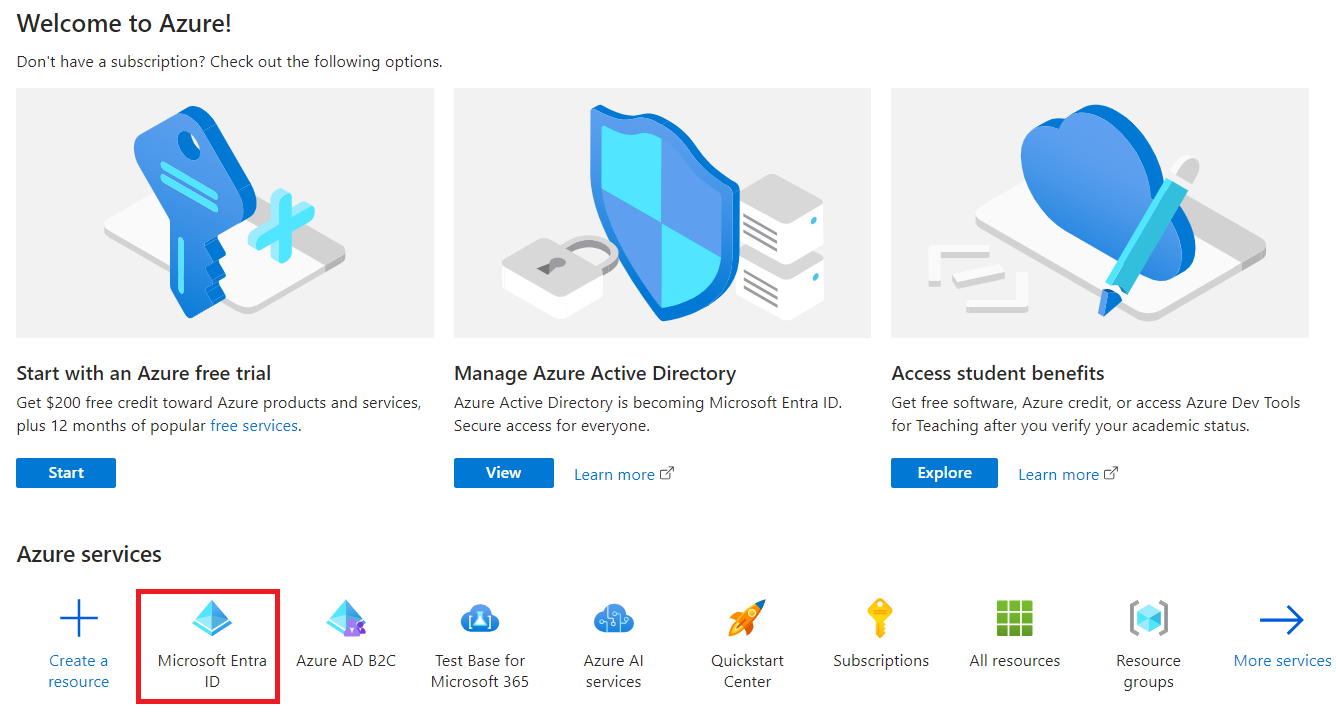
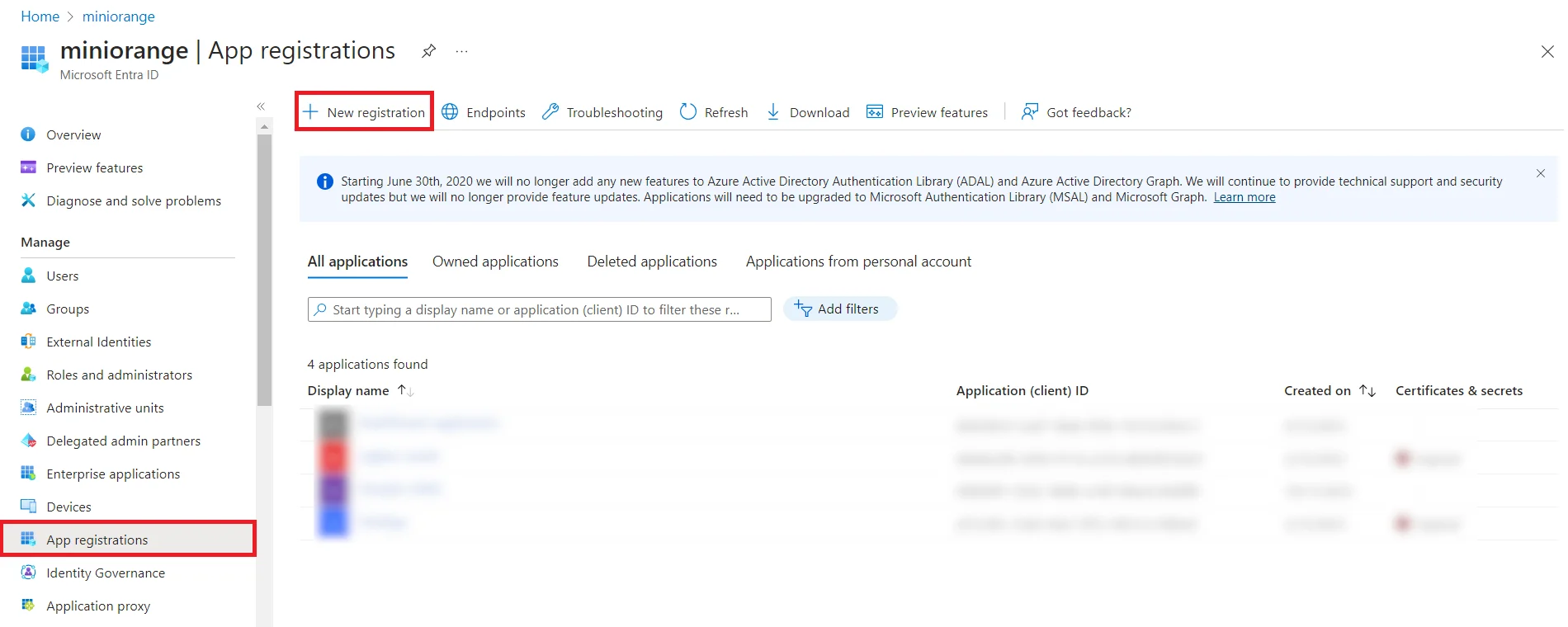
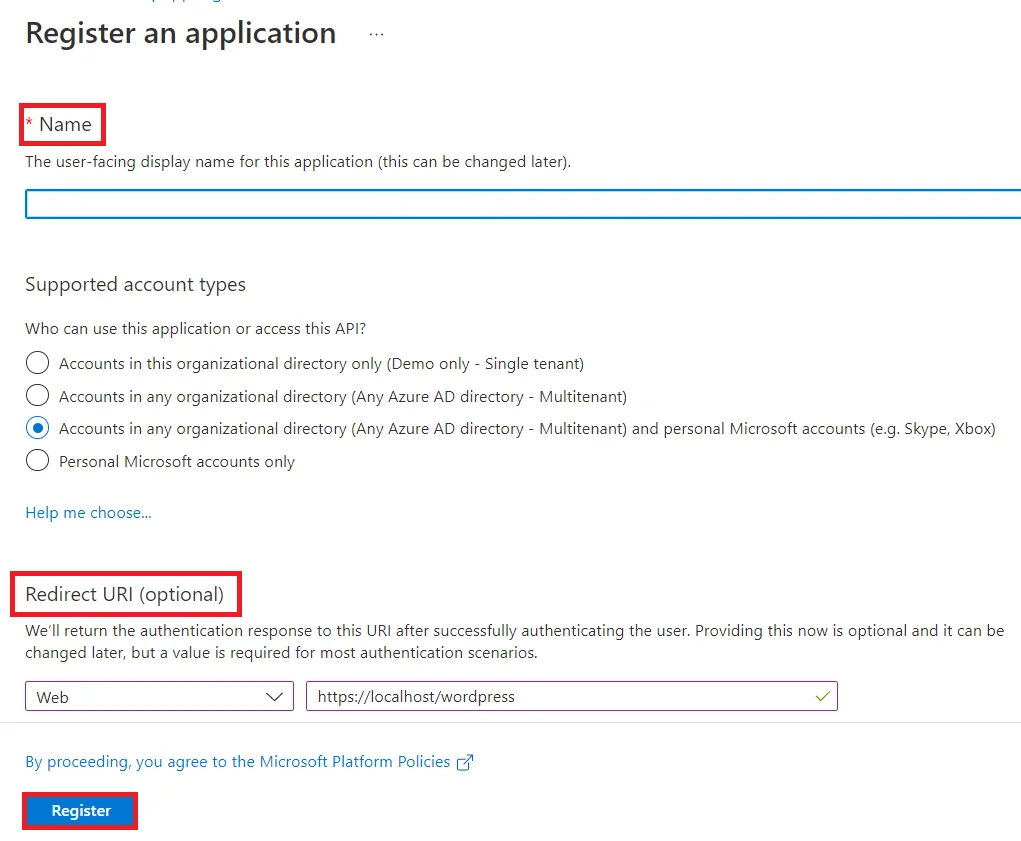

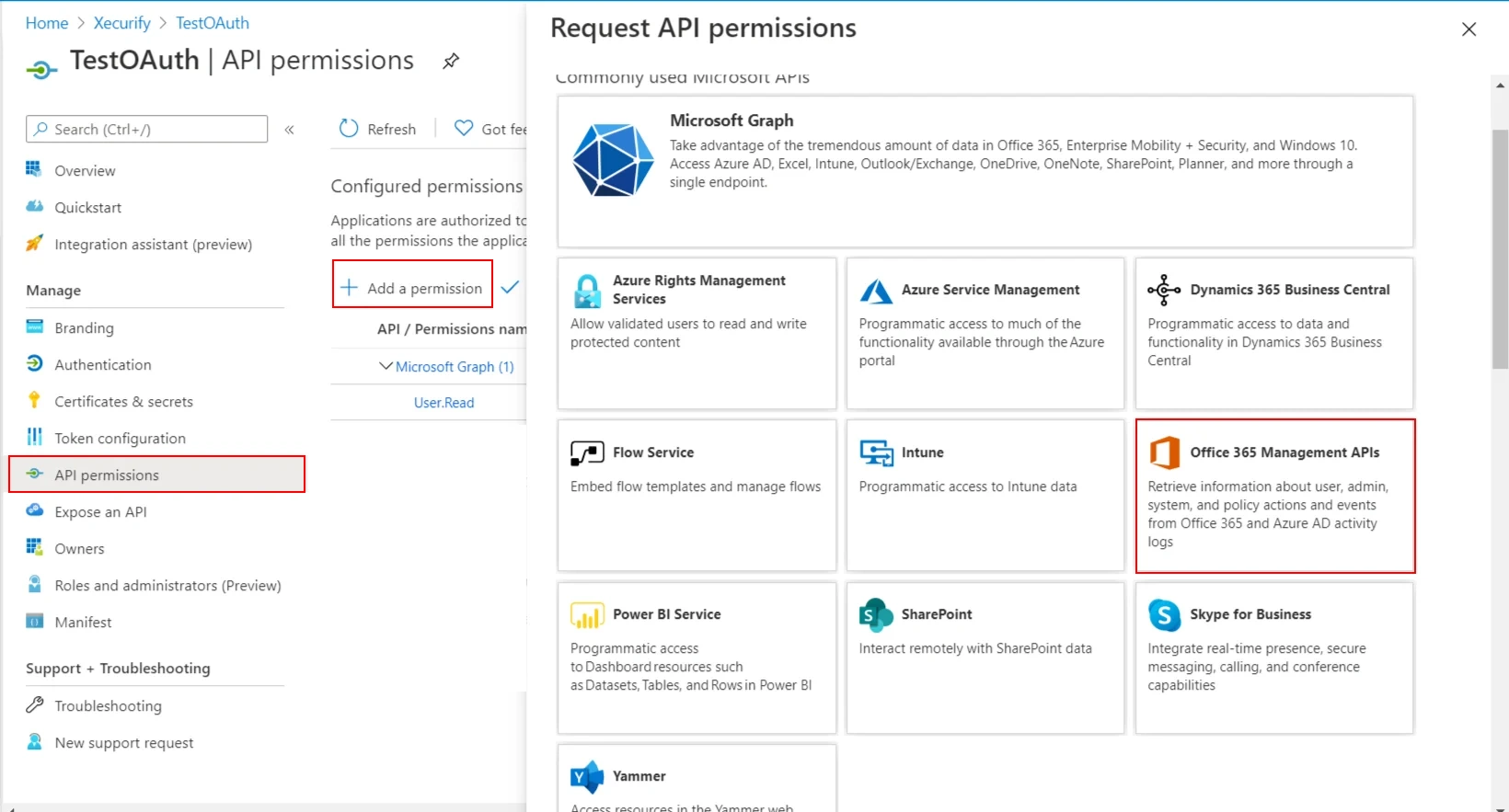

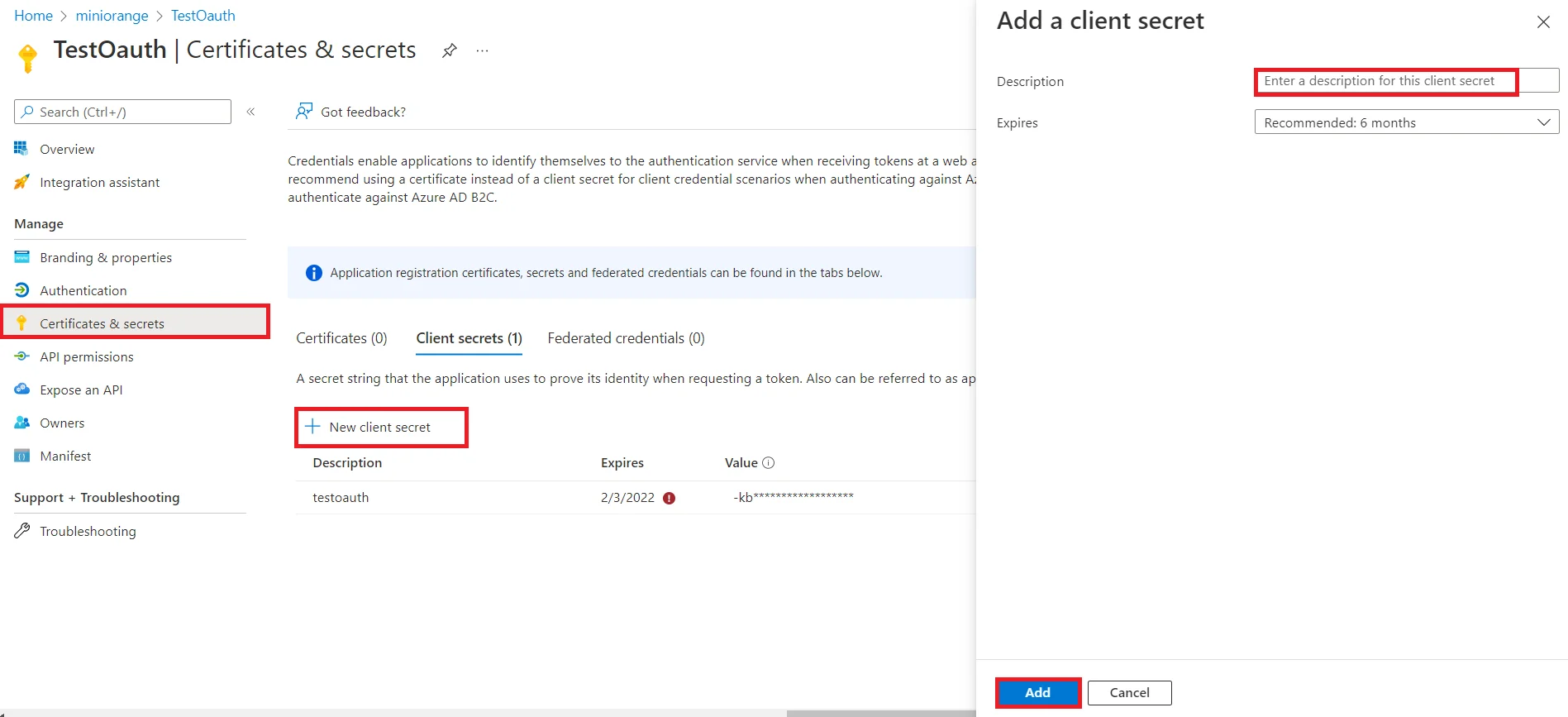
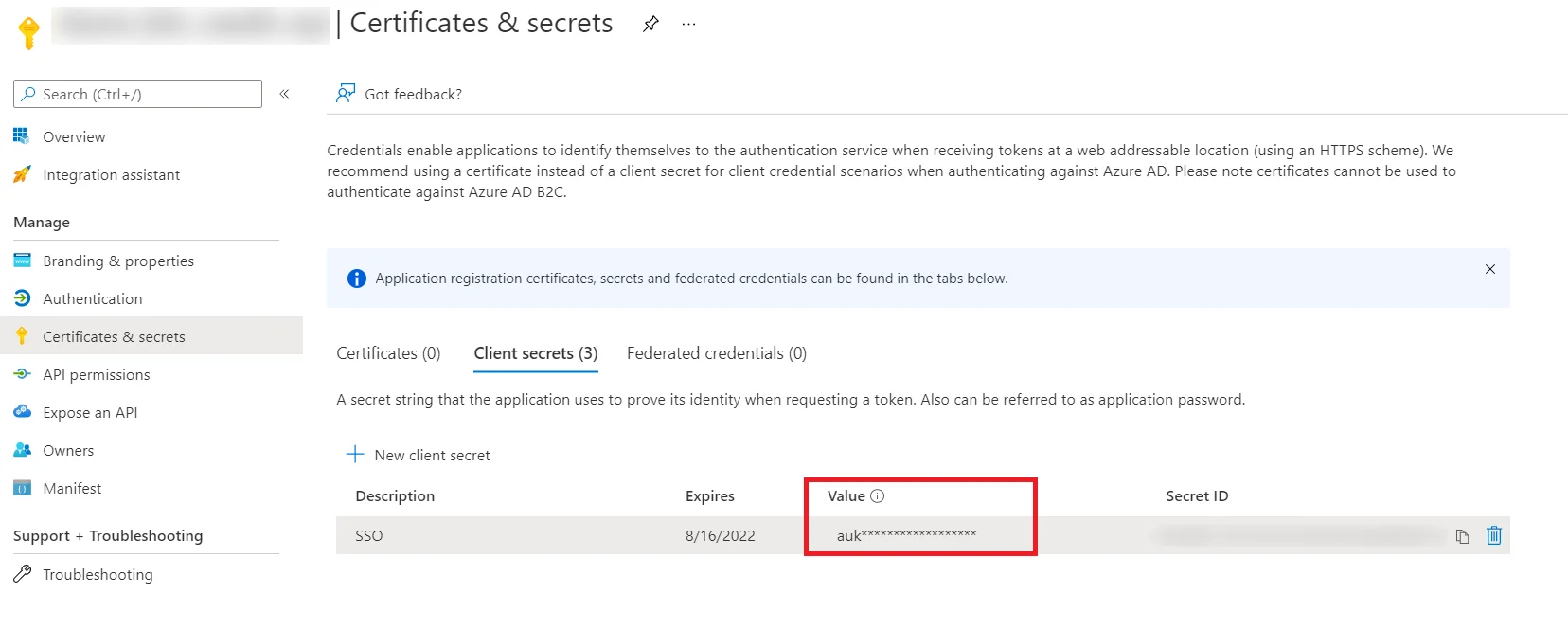
You have successfully configured Office 365 as OAuth Provider to enable Office 365 Single Sign-On (SSO) with WordPress, allowing user authentication through the Office 365 login.
2. Setup WordPress as OAuth Client
- Go to Configure OAuth tab and click Add New Application to add a new client application into your website.
- Choose your Application from the list of OAuth / OpenID Connect Providers, Here Office 365
- After selecting the provider copy the Callback URL which needs to be configured in OAuth Provider's SSO application Configuration.
- Enter the Client Credentials like Client ID & Client Secret which you will get from the Office 365 SSO application.
- Configure Tenant ID found from the Office 365 SSO application. Please refer the below table for configuring the scope & endpoints for Office 365 in the plugin.
- Click on Next.
- After verifying all the details on the summary page, click on Finish to save the configuration as well as test the SSO connection.

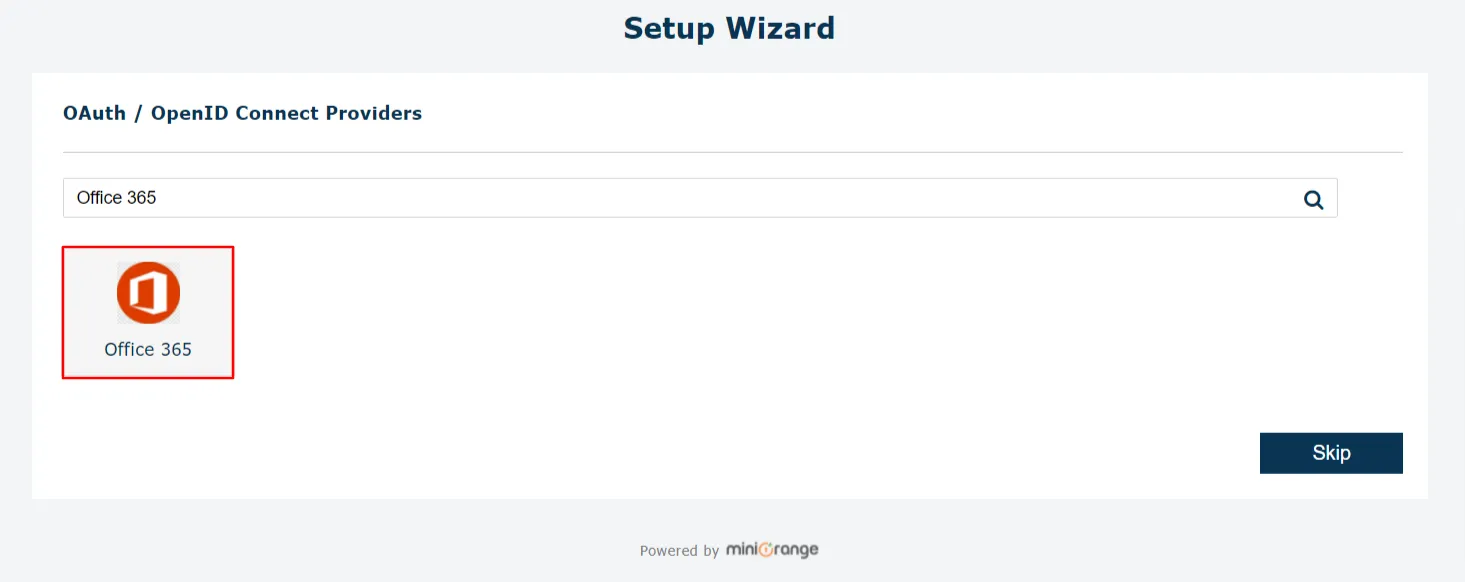
| Scope: | openid |
| Authorize Endpoint: | https://login.microsoftonline.com/{tenant-id}/oauth2/authorize |
| Access Token Endpoint: | https://login.microsoftonline.com/{tenant-id}/oauth2/token |
| Get User Info Endpoint: | https://graph.microsoft.com/v1.0/me |
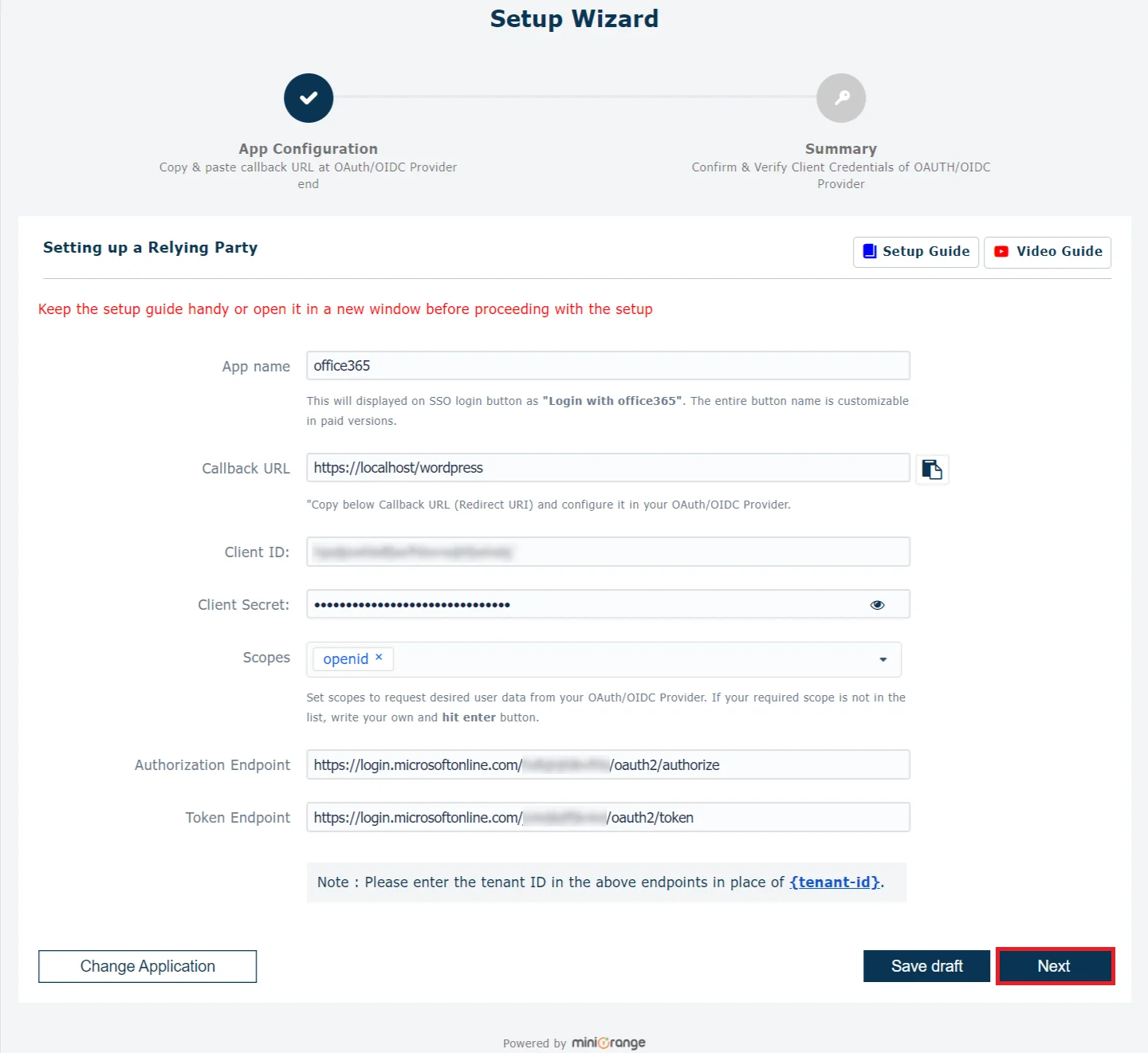
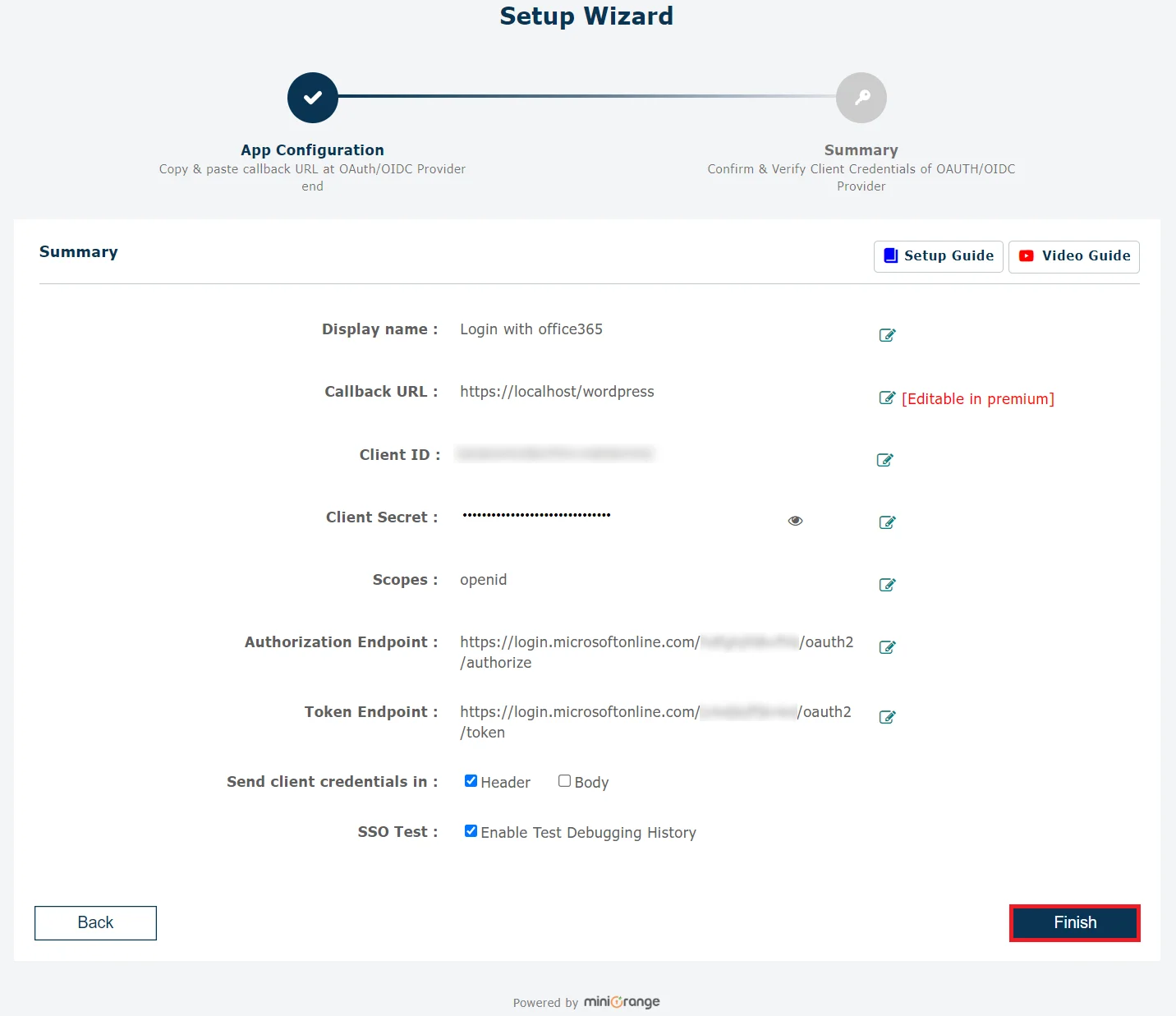
You have successfully configured WordPress as OAuth Client to enable Office 365 Single Sign-On (SSO) with WordPress, allowing user authentication through the Office 365 login.
- Go to Configure OAuth tab and search your application name to add a new client application into your website, Here Office 365.
- Configure App name & Tenant ID found from the Office 365 SSO application. Please refer the below table for configuring the scope & endpoints for Office 365 in the plugin. Click Next.
- Choose your Grant Type from the list of options & Click on Save Settings to save the configuration.
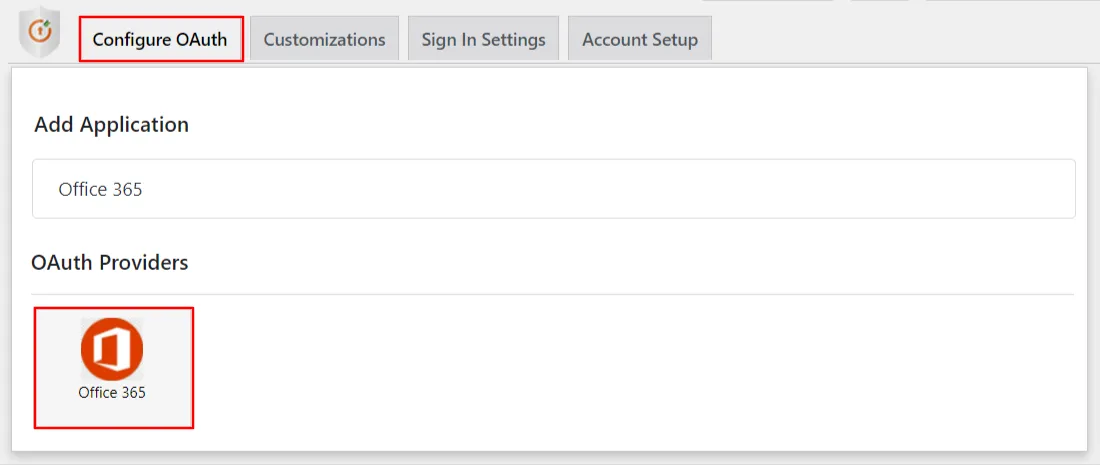
Looking for setting up Login flow for Multi-tenant Microsoft Application? Please click here.
| Scope: | openid |
| Authorize Endpoint: | https://login.microsoftonline.com/{tenant-id}/oauth2/authorize |
| Access Token Endpoint: | https://login.microsoftonline.com/{tenant-id}/oauth2/token |
| Get User Info Endpoint: | https://graph.microsoft.com/v1.0/me |
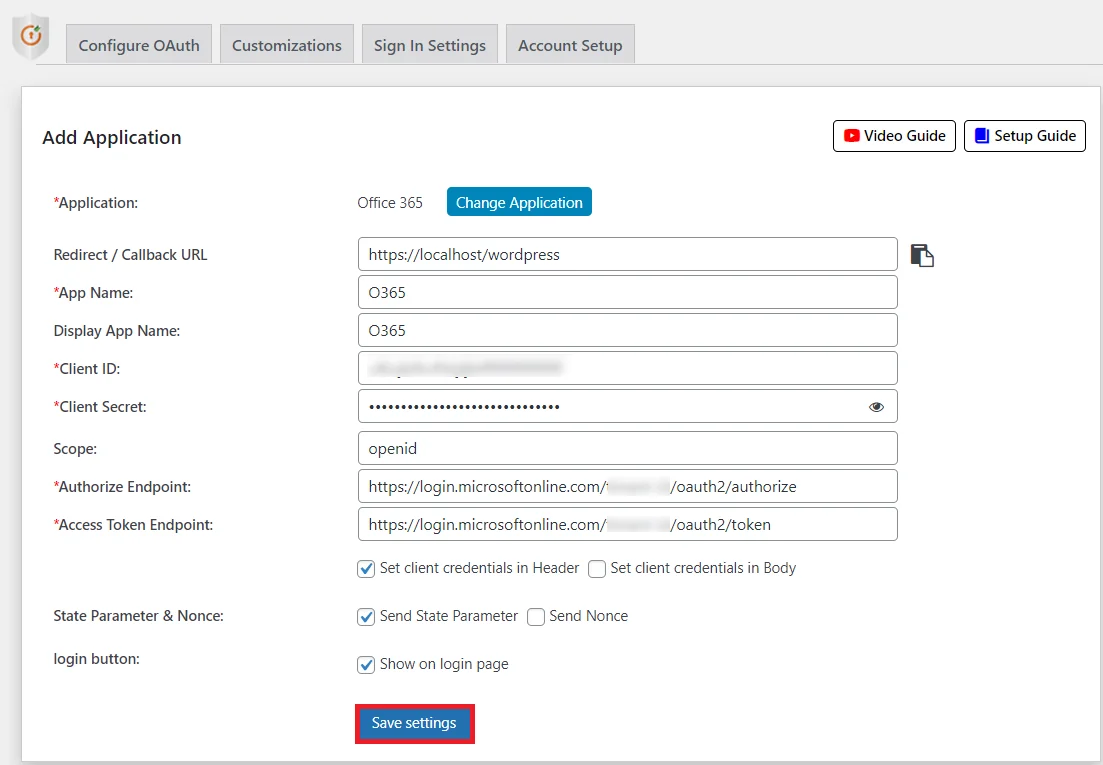
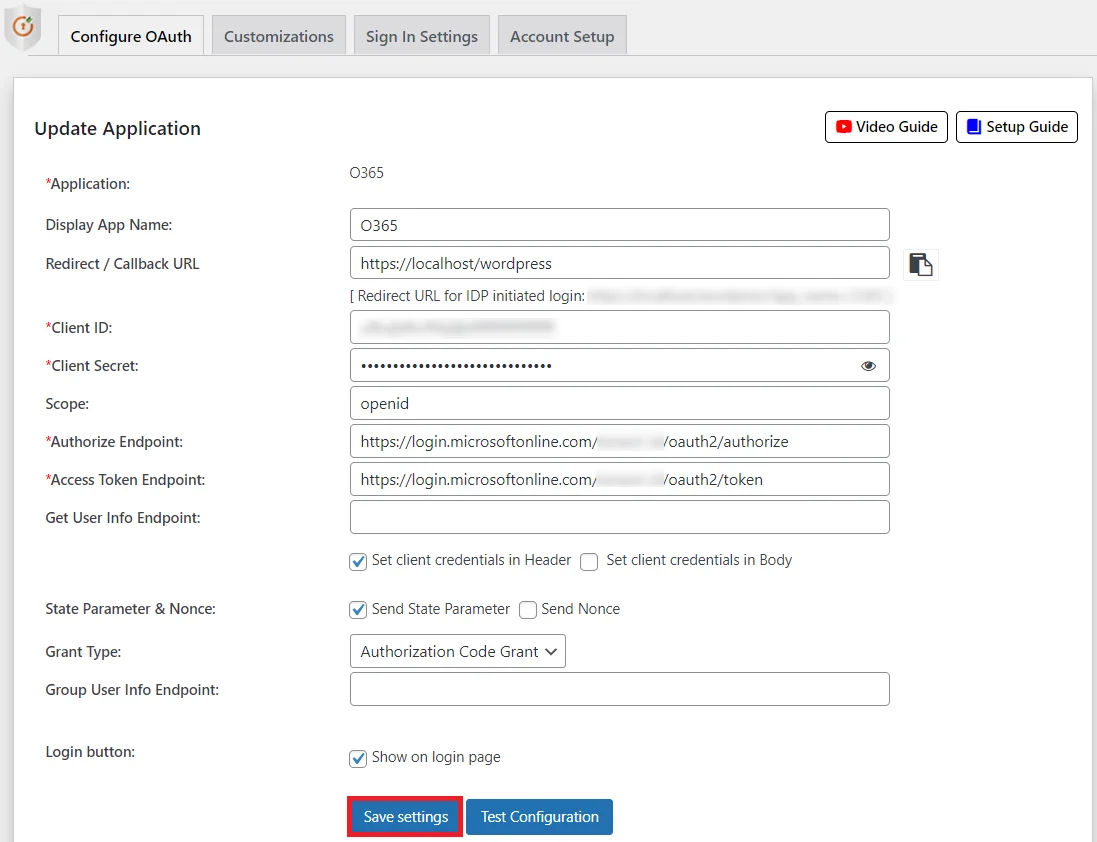
You have successfully configured WordPress as OAuth Client to enable Office 365 Single Sign-On (SSO) with WordPress, allowing user authentication through the Office 365 login.
3. User Attribute Mapping
- User Attribute Mapping is mandatory for enabling users to successfully login into WordPress. We will be setting up user profile attributes for WordPress using below settings.
- Go to Configure OAuth tab. Scroll down and click on Test Configuration.
- You will see all the values returned by your OAuth Provider to WordPress in a table. If you don't see value for First Name, Last Name, Email or Username, make the required settings in your OAuth Provider to return this information.
- Once you see all the values in Test Configuration, go to Attribute / Role Mapping tab, you will get the list of attributes in a Username dropdown.
Finding user attributes

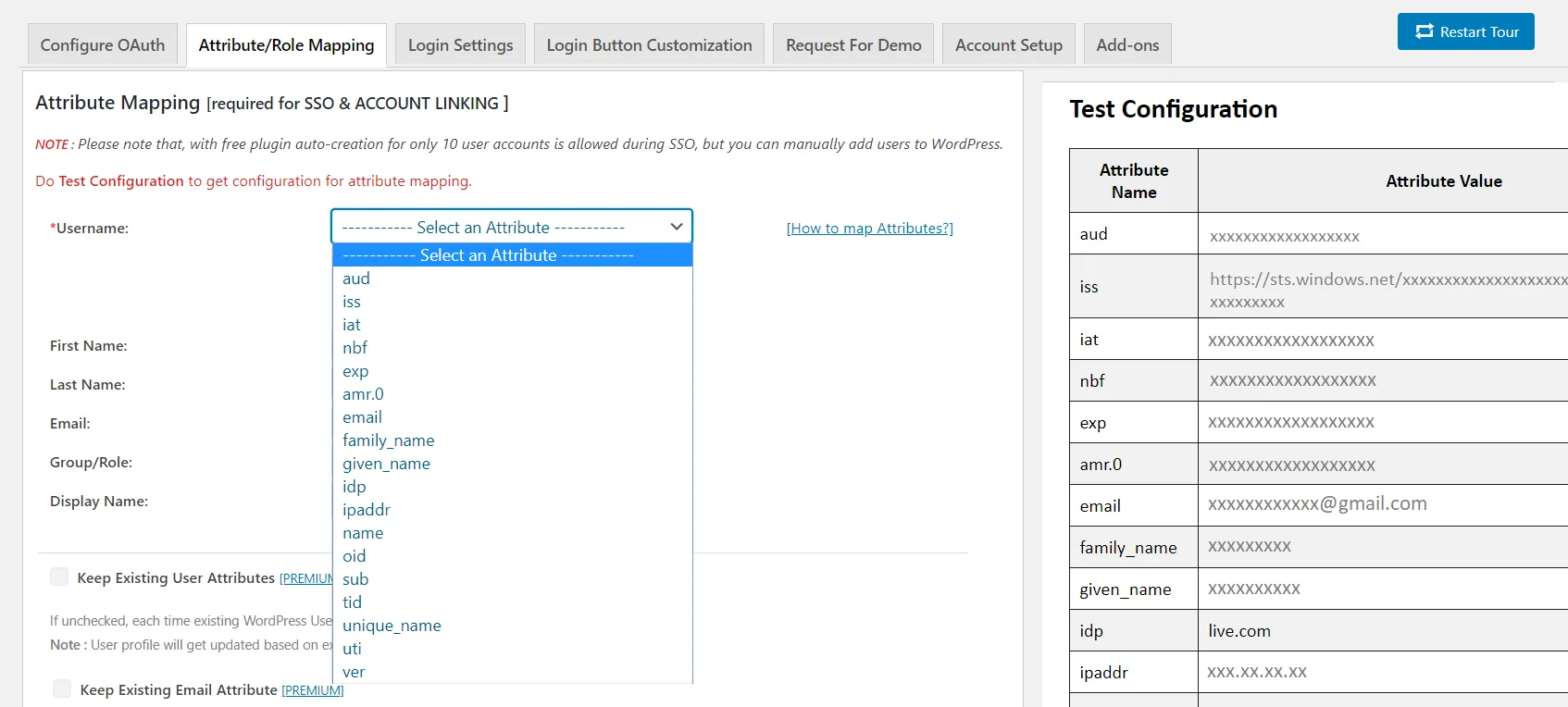
4. Office 365 Group Mapping
- Go to Application → Select the application where you want to configure the group mapping for Office 365 SSO. Now, Go to the API Permissions tab.
- Click on the Add permission button, and then Microsoft Graph API -> Delegated Permissions and select openid, Profile scope and click on the Add Permissions button.
- Click on the Grant consent for Demo button.
- Go to Manifest tab and find groupMembershipClaims and changes it’s value to "All" and click on the save button.
- Now you would be able to get the group's value in the Test configuration window.
- You can follow the role mapping section to map the groups to WordPress users while Azure B2C SSO.
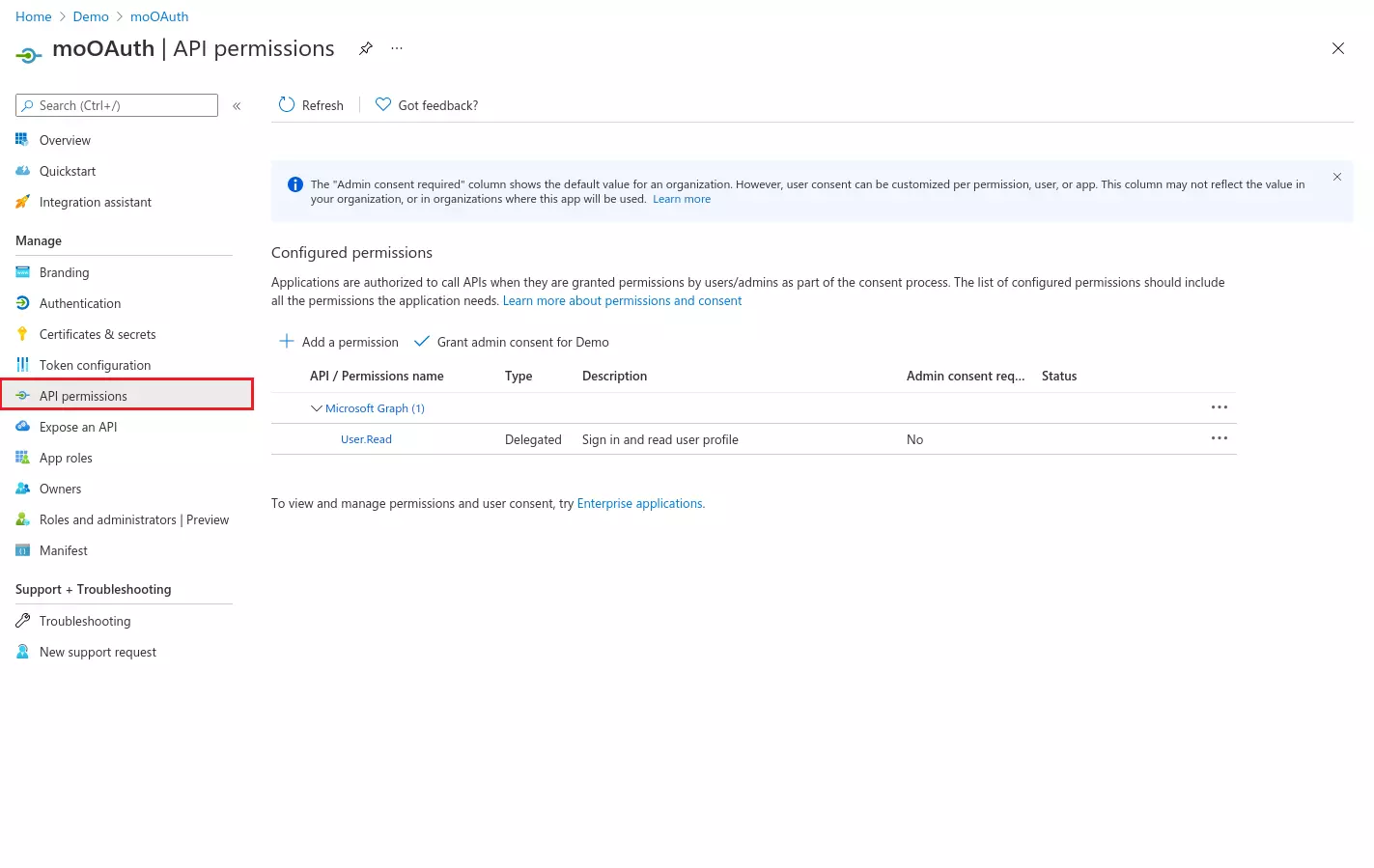
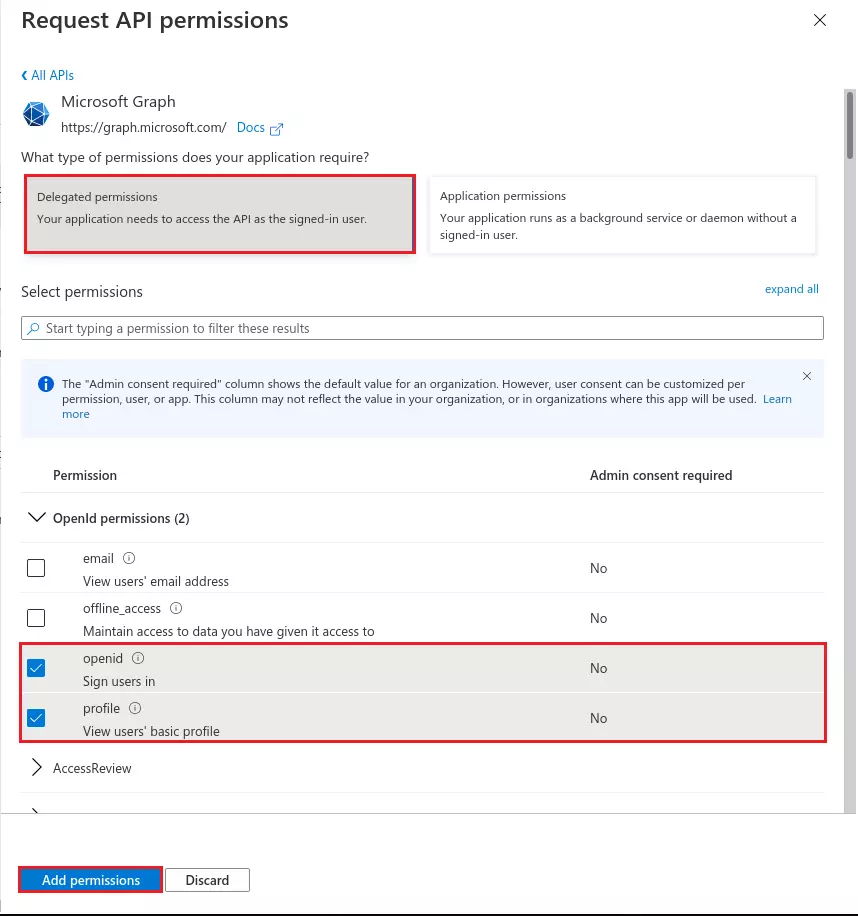
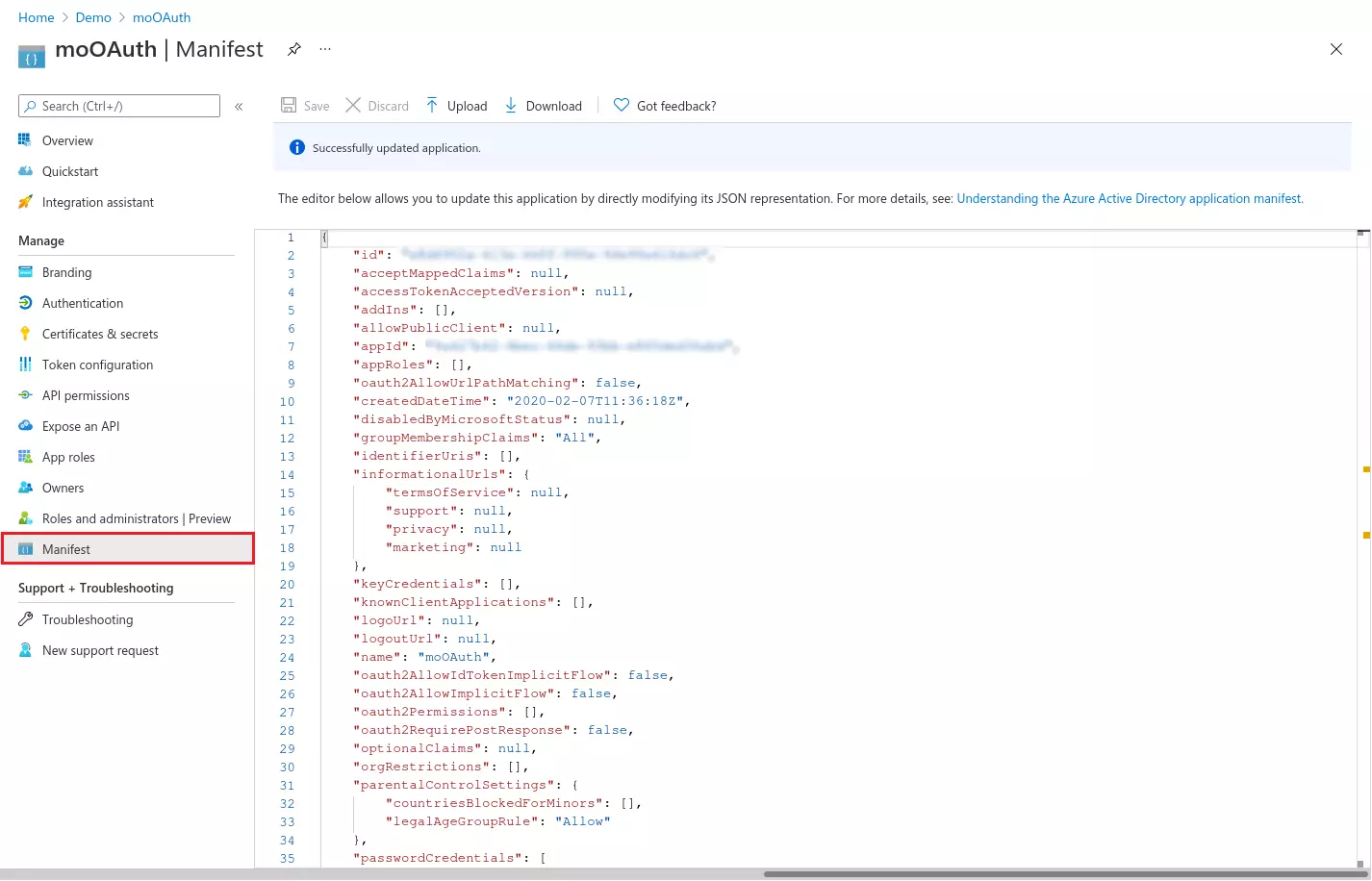
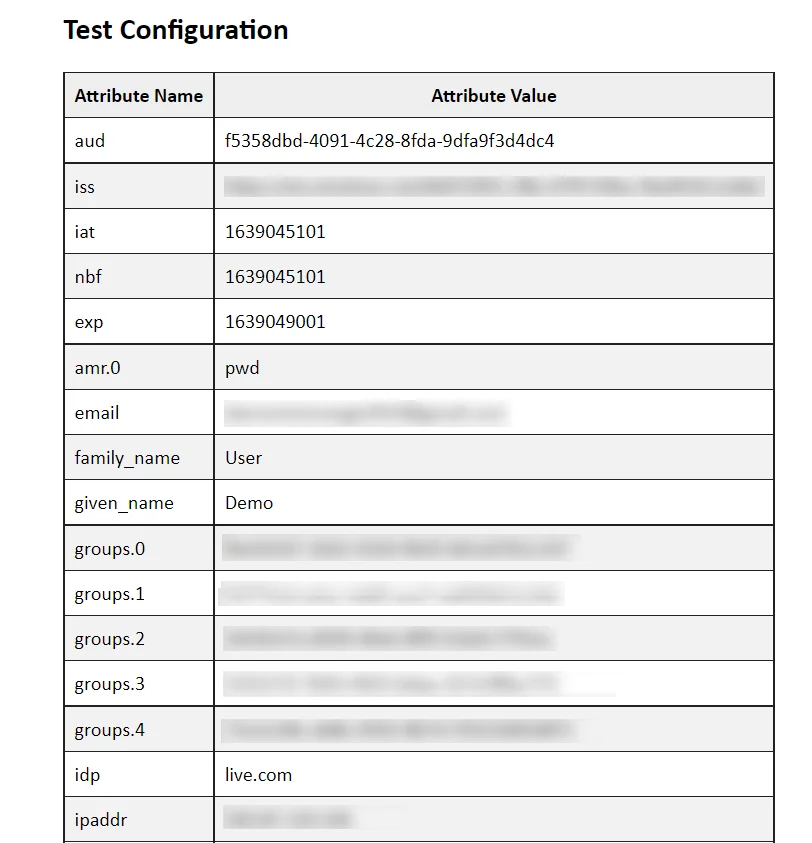
5: Role & Group Mapping [Premium]
- Click on “Test Configuration” and you will get the list of Attribute Names and Attribute Values that are sent by your OAuth provider Office 365.
- From the Test Configuration window, map the Attribute Names in the Attribute Mapping section of the plugin. Refer to the screenshot for more details.
- Enable Role Mapping: To enable Role Mapping, you need to map Group Name Attribute. Select the attribute
name from the list of attributes which returns the roles from your provider application.
Eg: Groups - Assign WordPress role to the Provider role: Based on your provider application, you can allocate the
WordPress role to your provider roles. It can be a student, teacher, administrator or any other depending on
your application. Add the provider roles under Group Attribute Value and assign the required WordPress role in
front of it under WordPress Role.
For example, in the below image. Teacher has been assigned the role of Administrator & Student is assigned the role of Subscriber. - Once you save the mapping, the provider role will be assigned the WordPress administrator role after
SSO.
Example: As per the given example, Users with role ‘teacher’ will be added as Administrator in WordPress and ‘student’ will be added as Subscriber.
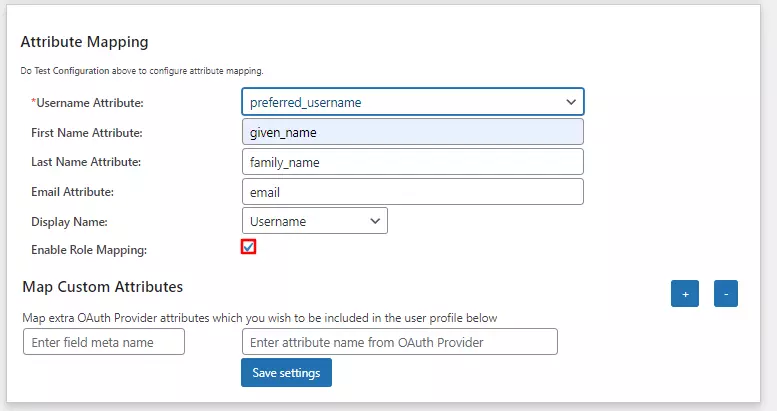
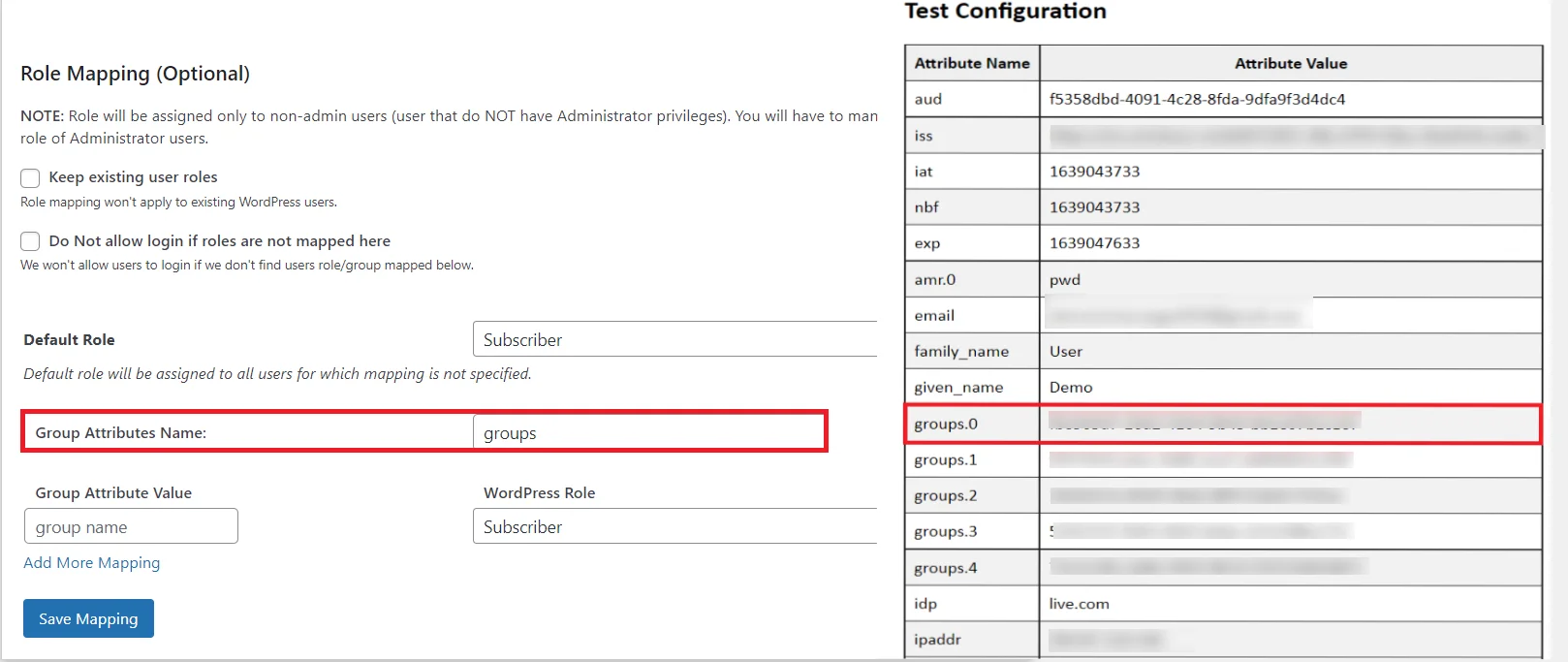

6. Sign In Settings
- The settings in Single Sign-On (SSO) Settings tab define the user experience for Single Sign-On (SSO). To add a Office 365 login widget on your WordPress page, you need to follow the below steps.
- Go to WordPress Left Panel > Appearances > Widgets.
- Select miniOrange OAuth. Drag and drop to your favourite location and save.
- Go to WordPress Left Panel > Appearances > Widgets.
- Select miniOrange OAuth. Drag and drop to your favourite location and save.
- Open your WordPress page and you can see the Office 365 SSO login button there. You can test the Office 365 Single Sign-On (SSO) now.
- Make sure the "Show on login page" option is enabled for your application. (Refer to the below image)
- Now, go to your WordPress Login page. (Eg. https://< your-wordpress-domain >/wp-login.php)
- You will see an Office 365 SSO login button there. Once you click the login button, you will be able to test the Office 365 Single Sign-On (SSO).
- Office 365 as OAuth Provider / OpenID Connect
- Configure Office 365 Single Sign-On (SSO) with OAuth
- Office 365 SSO integration with on-premises environments
- WordPress Single Sign-On (SSO) OAuth / OpenID Connect / JWT
- Azure & Microsoft 365 Single Sign-On with OAuth / OIDC
- Multi-tenant Login.
- What is OAuth 2.0 and how does it work?
- Frequently Asked Questions (FAQs)
Sign in settings for WordPress 5.7 and before

Sign in settings for WordPress 5.8
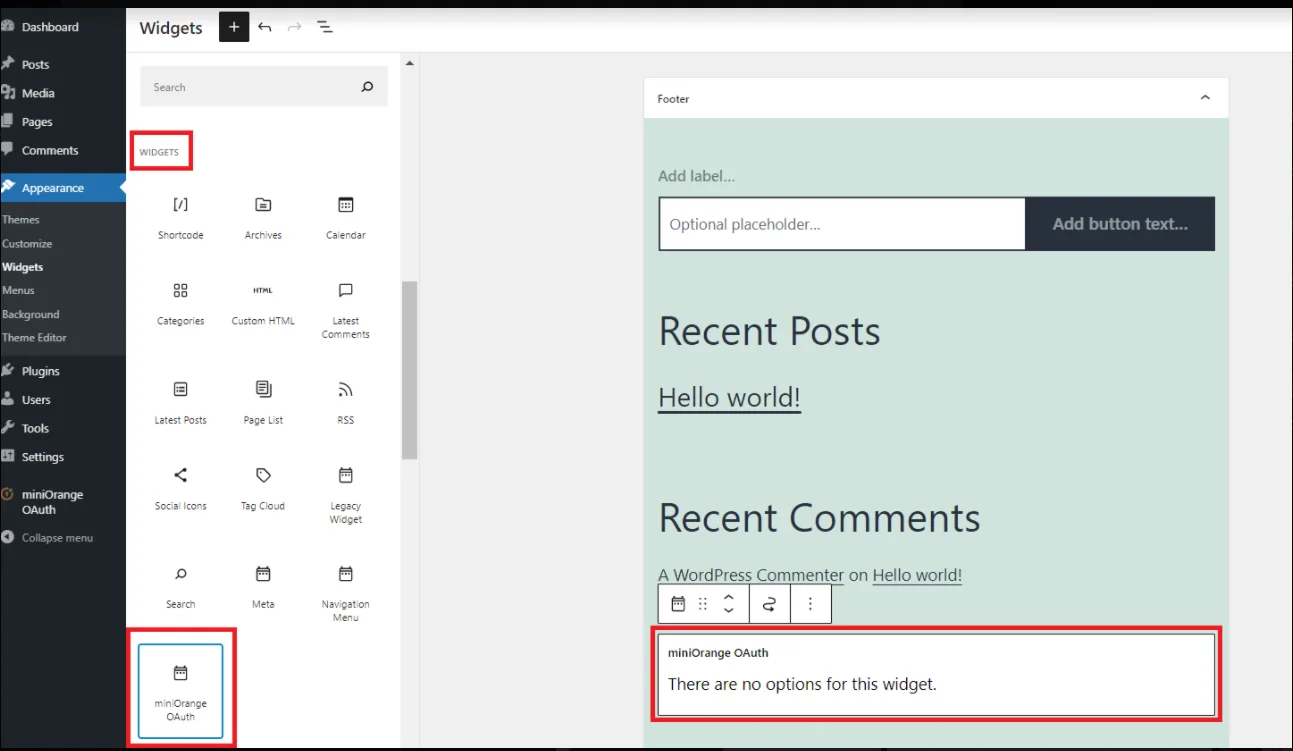
Sign in settings for WordPress 5.9
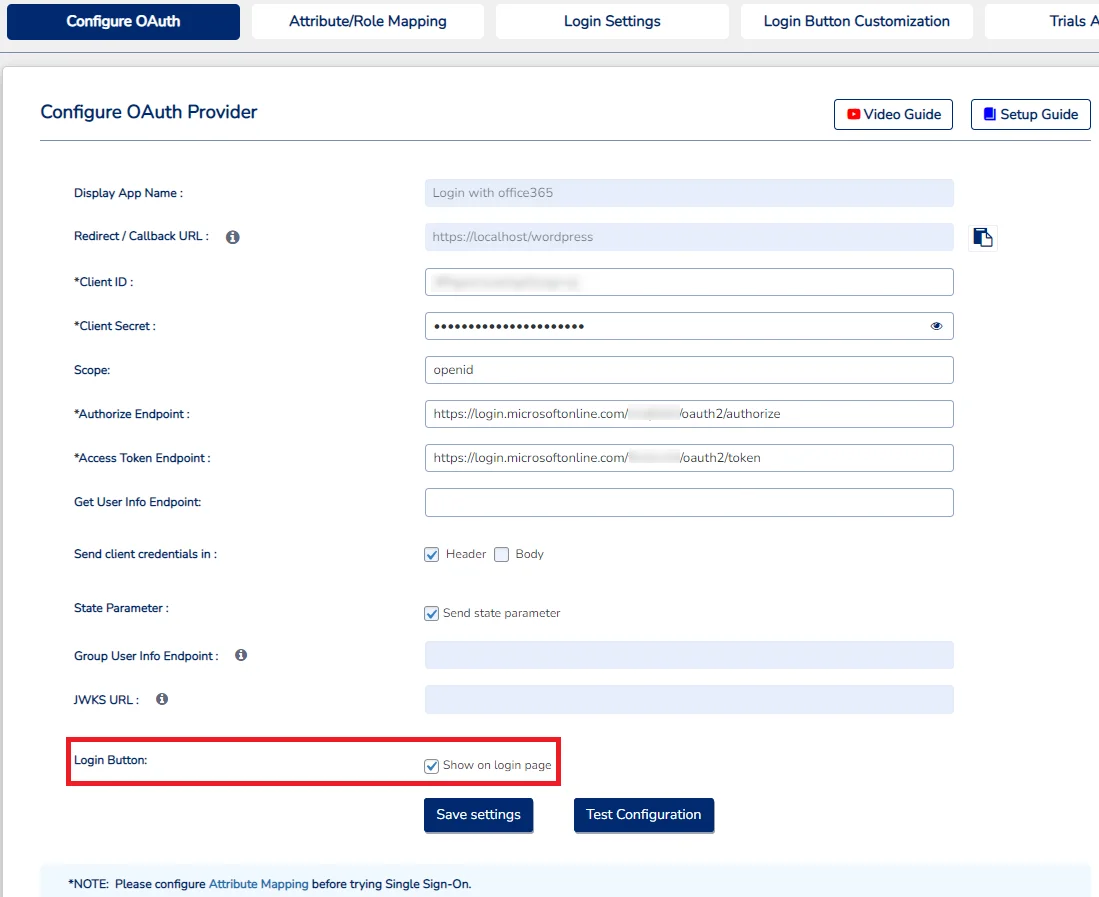
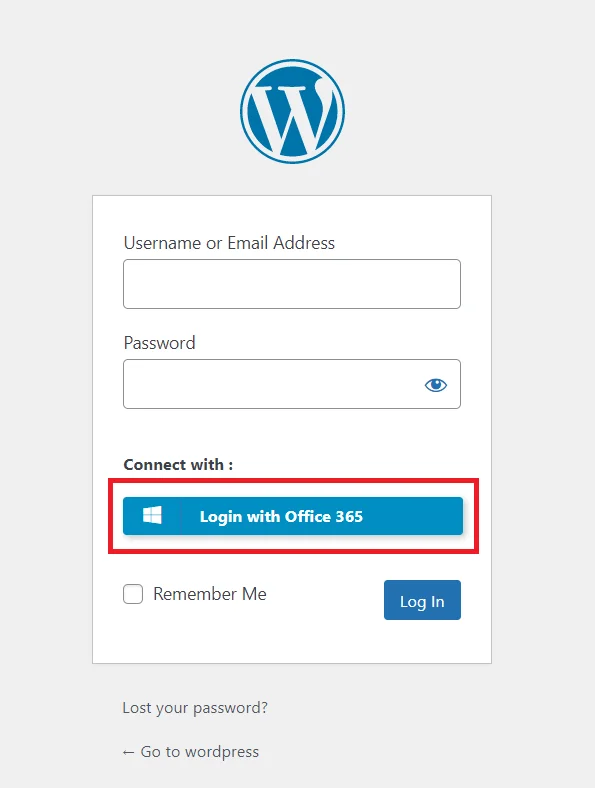
In conclusion, after successfully configuring Office 365 as an OAuth Provider and WordPress as an OAuth Client, you've achieved a smooth and secure authentication process for your users. Through Office 365 Single Sign-On (SSO), you can ensure a robust user experience within the WordPress environment. This allows user authentication through the Office 365 login. Through the integration of Office with WordPress users can securely log into their WordPress accounts with their existing Office 365 credentials.
Additional Resources
Mail us on oauthsupport@xecurify.com for quick guidance(via email/meeting) on your requirement and our team will help you to select the best suitable solution/plan as per your requirement.
Need Help? We are right here!

Thanks for your inquiry.
If you dont hear from us within 24 hours, please feel free to send a follow up email to info@xecurify.com
Cookie Preferences
Cookie Consent
This privacy statement applies to miniorange websites describing how we handle the personal information. When you visit any website, it may store or retrieve the information on your browser, mostly in the form of the cookies. This information might be about you, your preferences or your device and is mostly used to make the site work as you expect it to. The information does not directly identify you, but it can give you a more personalized web experience. Click on the category headings to check how we handle the cookies. For the privacy statement of our solutions you can refer to the privacy policy.
Strictly Necessary Cookies
Always Active
Necessary cookies help make a website fully usable by enabling the basic functions like site navigation, logging in, filling forms, etc. The cookies used for the functionality do not store any personal identifiable information. However, some parts of the website will not work properly without the cookies.
Performance Cookies
Always Active
These cookies only collect aggregated information about the traffic of the website including - visitors, sources, page clicks and views, etc. This allows us to know more about our most and least popular pages along with users' interaction on the actionable elements and hence letting us improve the performance of our website as well as our services.
